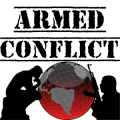but it seemed to me that American and western opinion was part of that -- and more likely to impact usage than the perceptions of the broader global audience.
While I am decidedly not a 'hearts and minds' guy, I certainly acknowledge the potential for adverse perceptions on the part of the local population in a COIN / FID / SFA/ IW / CIW scenario (is it just me or are we getting carried away in our list of terms...). However, since it seemed to me that any such adverse perceptions would be quickly acceded to, I was not -- and am not -- certain of the continuation of use of any equipment or TTP that provokes such an adverse reaction.
That's a long way of saying that I agree that "We've attempted to dismiss technology-related problems through painful parsing, excuses, and legal mumbo-jumbo before." We can probably also agree that's wrong, dumb and that we should not do that -- however, it's been my observation that pressure to cease such foolishness coming from American and / or western public opinion base is far, far more likely to achieve rapid cessation of the questionable practice than will the other opinions...













Bookmarks